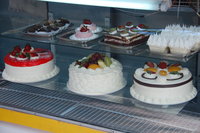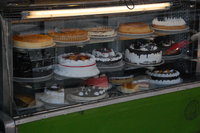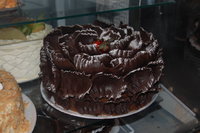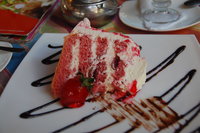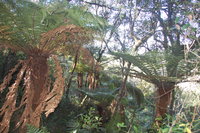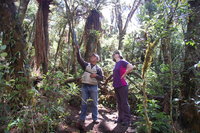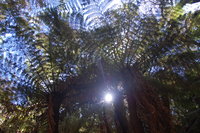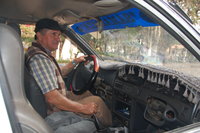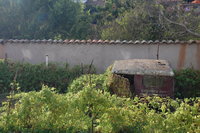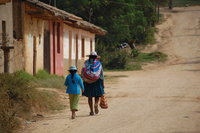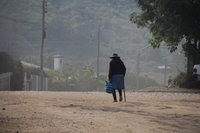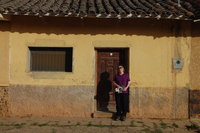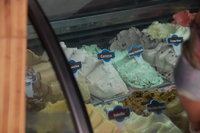And so, after six months of planning, our trip is finally under way. Actually, it is more like ten years, since Bolivia is where we were heading in Feb 2003 when our plans changed so drastically. So, there is a certain element of unfinished business here. It will be interesting for us (and hopefully you) to see whether we still enjoy life "on the road". Those of you who have done this sort of thing may have found that not being sure where your next meal or bed is coming from and living out of a rucksack day after day can be quite tiring. We shall see how that pans out...
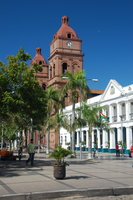
After a delayed start at Heathrow, we took BA to Miami followed by AA to La Paz then Santa Cruz. An 18km taxi ride from Viru Viru International airport got us to the Hotel Copacabana right in the center of town next to the square. Door to door 53 hours, but surprisingly only 5 hours time difference - too easy! Having been sure to bring puffer jackets, hiking boots and sleeping bags with us to stand the Andean nights, we find it is about 25°C and very humid; which is handy. Out with the only pair of shorts... hmmm!
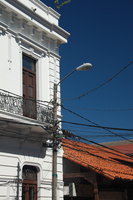
Santa Cruz is a large administrative center with not a lot going for it from a tourist's perspective, so we spent our first day hanging out in a few cafés. Recovering you understand! As usual when in a new town, we headed for the main church. This usually occupies a prominent spot and life often revolves around it, so it makes a good orientation point. So, off to the Basilica Mayor de San Lorenzo it was, which Megan helpfully stated was on the South side of the square. Steve confidently strode off in completely the wrong direction purely down to the fact that the sun occupies the wrong place in the sky down here! Turns out the Basilica is deeply unimpressive on the inside, but its unusual red brick construction makes for quite a picturesque exterior.
We did get approached in the town square by some students wanting to do a video interview for their course. They wanted to know what people back home knew about Bolivia. Hard to say. No, really. Socio-political, Spanish vocabulary is not our strong point and they had no English so it was hard to say anything. Don't think we will feature in their final project!
Had some nice fresh salads often containing the local Quinoa. Principally though, Santa Cruz seems to be the home of the cake! With the aid of some of the latter, we recuperated and were ready for the off.
About 120km west of Santa Cruz, nestling in a secluded valley in the eastern foothills of the Andes is the small town of Samaipata. It is a popular destination for stressed-out Santa Cruz-ians (Crucernos) and Lonely Planet toting Gringos. The journey by minibus (or trufi as they are known locally) costs 30Bs per person (£3) and takes about three hours. That is the theory anyway!
Apparently, there is an election in Bolivia next year (you probably know what's coming), and a popular way of making feelings known is to completely disrupt the infrastructure of the country by blocking the roads. Since the country only has a few main roads, this can be very effective. It seems the protesting group enlists the help of a load of lorry drivers who park their vehicles across the road at strategic points. The protesters then set up tents and barbecues and play music whilst all the stranded motorists stand around and talk about stuff. So, we are about half an hour out of Santa Cruz when we hit the first blockade. No problem, we turn off onto a side road (actually a dirt track) and bump through the fields along with everyone else...including all the people coming the other way. It doesn't take long for lorry to meet lorry! After an hour of this, including detouring round a stranded bus, we rejoin the highway the other side of the protesters. Victory! A short while later, we come across another blockade and try the cunning detour trick again only to find that the protesters are wise to this one and have blocked the side roads too. Eventually, we find ourselves in a small hamlet with one shop, the owner of which can offer us plenty of advice - none of it any good. After about an hour's standing around discussing stuff, a car comes along and they claim to know a way around the blockade. In fact, they do and we end up driving through a hospital to regain the main road. Victory! A short while later, we come across another blockade (starting to cut and paste that bit). This time, the barbecues and tents (not to mention the lorries) form an impenetrable barrier. We can go no further. Until, that is, a driver from the same trufi company walks up to us. He was travelling in the opposite direction and is equally stuck. A cunning plan begins to form. We had read (and seen on TV) that on no account should you try to get through a Bolivian road block! Never the less, we paid off our driver, grabbed all our stuff and proceeded to walk nonchalantly through the blockade. As nonchalantly as you can when being obvious gringos and carrying rucksacks! Fortunately, the barbecues were in full swing by this time and we managed to sidle through without being stoned by irate lorry drivers. Our new driver reversed direction but we had to head the wrong way down the dual carriageway for a few miles before finding a place to cross over! Details.
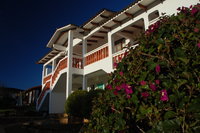
Eventually, we arrived in Samaipata after a good six hours and we gratefully checked into the charming Posada del Sol where we were welcomed with a fantastic jar of ice cold lemonade and no small amount of amusement at our adventures with the blockading "workers". However, the general consensus was that we would have no problem leaving town as our intended day of departure coincided with a big football game on TV, so it was unlikely anyone would turn out to block the road. Politics, eh?
One of the main reasons people come to Samaipata is for a little R&R and this was the first real opportunity we had had to put our feet up since leaving the UK. Consequently, we immediately arranged for a guide to take us out into the mountains for a strenuous hike! Normally, we would like to do our own thing walking wise, but Ronaldo was an indispensable guide when it came to identifying thousand year old giant tree ferns (los Helechos) and the droppings of spectacled bears. The walk took us up to about 2800m which did leave us a bit breathless, but also speechless at the views across the Andean cloud forest. This also served as good acclimatisation for future escapades.
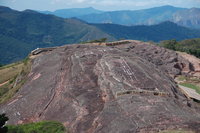
Also according to Ronaldo, the best archaeological remains in Bolivia are at Tiahuanaco and El Fuerte, the latter of which just happens to be down the road from Samaipata. So we negotiated with a local taxi driver to take us there and wait for a couple of hours before bringing us back. The taxi seemed a bit odd when we got in - it turned out to be a right hand drive Japanese import that the driver had converted himself. However, he'd only moved the pedals and steering wheel. The instrument panel, etc. was still on the right hand side and none of it was working. It is odd for an English person to be sitting in the front right hand seat in front of all the dials, but have no steering wheel whilst a possessed taxi driver hurtles up the side of a mountain! It was interesting to look around the site of El Fuerte, but there is not a huge amount of it left other than the carved summit of the mountain which is really El Fuerte's party piece. We were approached by an on-site guide offering his services which we declined. This was fortuitous as, on the way back, another of the site's guides scrounged a lift in our taxi and Megan negotiated a free explanation of the history and culture of the site in exchange. Apparently, El Fuerte was a very sacred place being the confluence of the Amazon rainforest, the Andes and the fertile valleys. This meant the Amazonians were able to grow virtually every kind of crop here. Since they were nature worshippers and the site was so productive, they viewed it as a very special place. There were stories of astronomical calculators working to the Venusian calendar and all sorts of mathematical stuff carved into the rock.
Samaipata turned out to be a great little place to hang out and to use as a base to explore some of the lower Andean scenery. It is a pleasant 25°C during the day and is sunny most of the time even though we are, of course, in the depths of winter. At night, the temperature drops to about 6°C due to the altitude. We always knew that we would be experiencing a range of temperatures and this is probably rather mild compared with what is to come.
Back in Santa Cruz, we made a discovery that will be of interest to the BSAC divers reading this - they sell beer flavoured ice-cream here!
Now we are waiting to pick up a flight with the local airline Amazonas to the architectural wonder of Sucre nestling at 2790m on the eastern edge of the Altiplano. More on this in the next instalment (Amazonas willing).
It is early days yet, but it seems that, to be a hostel these days, you absolutely have to provide WiFi Internet access. On previous trips, we observed that to travel meant to go to Sydney and drink for six months. Now it seems to mean move from one hostel to the next spending the entire time on Facebook (and drinking).
